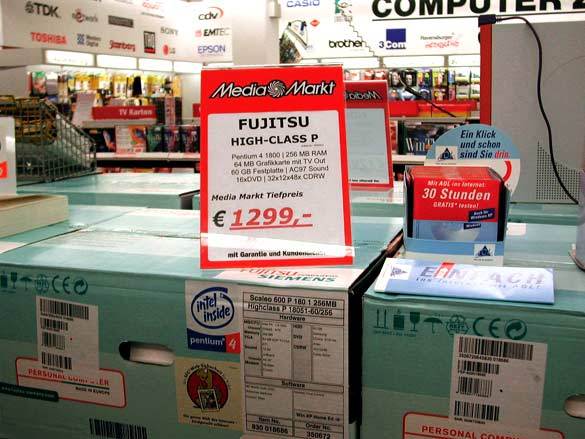Under The Hood: 140 Chipsets Compared
Introduction
PC Systems From The Discounter: Castrated Chipsets
For the first time, Joe Blow opens the case of his new PC system. He bought this low-priced computer from a large discounter after considerable effort. What persuaded him to buy the PC were things such as "XP 2000+" and "30 GB," which were all over the packaging as well as the fliers. Now, he's pretty disappointed because, despite the faster CPU in his system, his friend Jonesy's PC is still significantly faster. Joe's bargain-basement PC's performance is hurting particularly with 3D games, where the frame rate clearly lags behind Jonesy's self-built system. Joe's budget computer crashes the most when he tries to make back-up copies of rented DVDs. By contrast, Jonesy is able to burn two complete films to CD in a single afternoon. Joe Blow is at a total loss - even though he has a modern PC, he's annoyed by the fact that he invested $1000 for this thing. He has fallen for the discount store's marketing ploys, blinded by the promises of a fast system. Jonesy gives him the straight dope: in addition to containing components, Joe's PC is equipped with a motherboard that strongly limits the system's functionality and upgradeability. This is how a bargain buy often becomes an item for the garbage dump.
Not for Enthusiasts: PC systems from the discount store are mostly based on a motherboard that is equipped with an obsolete chipset and cheap components.
Many users are concerned with how to best configure their PC systems and which components to use. Typically, the analysis of a PC's performance potential is based on an evaluation of components such as the processor, memory, graphics chips and hard disks. However, the chipset on the motherboard is the most significant factor in determining the upgradeability of the motherboard and which of it's unused features can be utilized. In addition, it affects features such as Ultra DMA modes, USB interfaces and the compatibility of components.
Pentium 4 systems from the discounter are often with slow PC266 RAM, or even obsolete PC133 RAM.
We'll show you over 150 different combinations of North and South Bridges with chipsets for AMD and Intel, and we'll list the individual features, as well. The idea for this article came from Bert Töpelt, who felt that an overview of all chipsets was needed.
Get Tom's Hardware's best news and in-depth reviews, straight to your inbox.
Current page: Introduction
Next Page Overview: Chipsets For AMD, Intel And VIA CPUs

